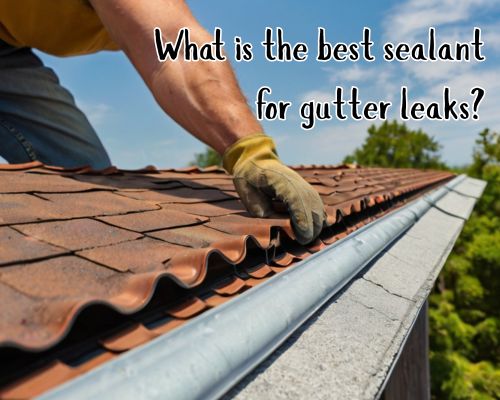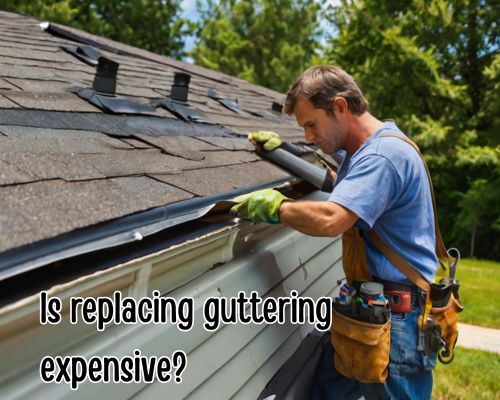If you’ve ever been caught in a Melbourne downpour only to hear the telltale drip… drip… drip of a leaky gutter, you’re not alone. Gutter leaks are a common issue for homeowners across Victoria, particularly in older suburbs like Carlton, Fitzroy, and even along the leafy avenues of Kew. So, what is the best sealant for gutter leaks? The short answer: it depends on your gutter type, the extent of the leak, and Melbourne’s unique weather conditions. With Gutter Cleaning Melbourne, let’s dive deep into what matters—and which products truly hold up under pressure.

Why Do Gutter Leaks Happen in Melbourne?
Before you can fix a problem, it helps to understand it. Melbourne’s temperate oceanic climate is known for its unpredictability—where sunny skies can turn to hailstorms in a matter of minutes. This variability wreaks havoc on building materials, especially metal and PVC gutters. Here are the most common reasons for gutter leaks:
- Thermal expansion and contraction from fluctuating temperatures
- Rust or corrosion in older metal gutters, common in pre-1980s Melbourne homes
- Loose joints and sagging caused by blocked downpipes
- Cracks or seam separation in uPVC gutters due to UV exposure
The good news? The right gutter sealant can serve as a long-lasting solution when chosen wisely.
Qualities of an Effective Gutter Sealant
When searching for the best gutter leak sealant, Melbourne homeowners should prioritise products that:
- Withstand extreme weather—think 40°C heatwaves and sudden cold snaps
- Remain flexible to accommodate movement and temperature changes
- Bond to both wet and dry surfaces for year-round repairs
- Are UV-resistant, especially important for north-facing gutters
- Work on multiple materials such as aluminum, galvanized steel, copper, and PVC
Now let’s get to the real question: which sealants actually tick all these boxes?
The Top Sealants for Gutter Leaks in Melbourne
1. Selleys Storm Sealant
A locally manufactured product, Selleys Storm is a favorite among Melbourne tradies for good reason. It’s a polymer-based sealant that adheres to wet surfaces—even in the rain. Perfect for emergency gutter leak repairs during Melbourne’s flash storms.
- Best For: Quick-fix jobs on metal and PVC gutters
- Cure Time: Skins in 15 minutes, full cure in 24 hours
- Bonus: Available at Bunnings Warehouse stores across Melbourne
2. 3M Marine Adhesive Sealant 5200
Originally designed for boats, this sealant has found its way into roofing and gutter applications. Its high tensile strength and long-lasting bond make it ideal for homes near the coast like Brighton or Williamstown, where salt air corrosion is an issue.
- Best For: Aluminum or steel gutters exposed to salty air
- Cure Time: 5–7 days (but worth the wait)
- Durability: Resistant to mildew, UV, and vibration
3. Gorilla Waterproof Patch & Seal Tape
Technically not a “sealant” in the traditional sense, this butyl rubber tape creates an instant watertight barrier. Homeowners in areas like Ringwood or Glen Waverley love it for its ease of use and immediate results—no caulking gun required.
- Best For: DIY fixes and temporary repairs
- Surface Types: Metal, plastic, vinyl
- Application Tip: Clean surface thoroughly for optimal adhesion
DIY vs. Professional Gutter Sealing in Melbourne
While DIY repairs can be effective, particularly with products like Selleys Storm or Gorilla Tape, there are times when calling a Melbourne roofing specialist is the smarter move. Here’s when to ditch the ladder and pick up the phone:
- Multiple leaks across different sections of the gutter
- Signs of structural damage like sagging or rust-through
- Persistent water pooling or foundation erosion
- Two-storey homes, where safety becomes a concern
Professional roofing companies in Melbourne—like Gutter Cleaning Melbourne—offer comprehensive inspections, often using drone technology or thermal imaging to detect hard-to-find leaks.
Seasonal Gutter Maintenance Tips for Melbourne Homes
Sealing leaks is step one. Keeping them sealed is step two. Here’s a localised maintenance calendar to protect your gutters year-round:
- Autumn: Clear falling leaves from deciduous trees in areas like Camberwell and Hawthorn. Install gutter guards if needed.
- Winter: Inspect for ice damage in the Dandenong Ranges or Mount Macedon homes, where temps can drop below freezing.
- Spring: Check for UV cracking in plastic gutters. Clean out any debris from spring blooms.
- Summer: Look for expansion-related leaks caused by Melbourne’s 30°C+ heat waves.
Remember, prevention saves money—and avoids future water damage to fascia boards, walls, and foundations.
Environmental Considerations in Victoria
With Melbourne becoming increasingly focused on eco-conscious living, it’s worth noting that many modern gutter sealants are low in VOCs (volatile organic compounds) and non-toxic. Opt for products labeled “green” or “eco-safe” if you’re concerned about runoff into rainwater tanks or garden irrigation systems—especially common in sustainability-focused suburbs like Northcote or Brunswick.
Conclusion: What Is the Best Sealant for Gutter Leaks?
So, what is the best sealant for gutter leaks in Melbourne? There’s no one-size-fits-all, but here’s the takeaway:
- For all-weather reliability, go with Selleys Storm.
- For extreme durability, 3M 5200 is king.
- For quick DIY jobs, nothing beats Gorilla Tape.
Ultimately, the best sealant is one that fits your gutter material, leak severity, and Melbourne’s unpredictable climate. Whether you’re fixing a minor crack in your Preston townhouse or sealing the gutters on a heritage home in South Yarra, the right product can save you time, money, and many rainy-day headaches.
Local Resources for Gutter Repairs in Melbourne
- Bunnings Warehouse: Multiple locations from Collingwood to Chadstone
- Reece Plumbing Supplies: For professional-grade sealants and guttering tools
- Melbourne Roofing Services: Residential and commercial leak repairs
- City of Melbourne: Rainwater harvesting rebates and sustainability programs

